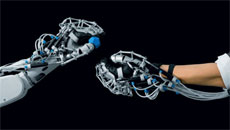Most apps are free and even when these come with a price tag, the amount is nominal. Even then, people are not downloading them. Why?
According to a latest report by American internet analytics company comScore, most US smartphone owners download zero apps in a typical month.
It may be because people just do not need that many apps.
The apps people already have are more than suitable for their needs like Facebook, Google, Twitter, WhatsApp, Yahoo etc.
Only about one-third of US smartphone owners download any apps in an average month, with the bulk of those downloading one to three apps.
"The top seven percent of smartphone owners account for nearly half of all download activity in a given month, comScore reported.
A staggering 42 percent of all app time spent on smartphones occurs on the individual's single most used app.
"New apps come and go, especially games, but perhaps breakthrough apps will be increasingly rare," the report added.


